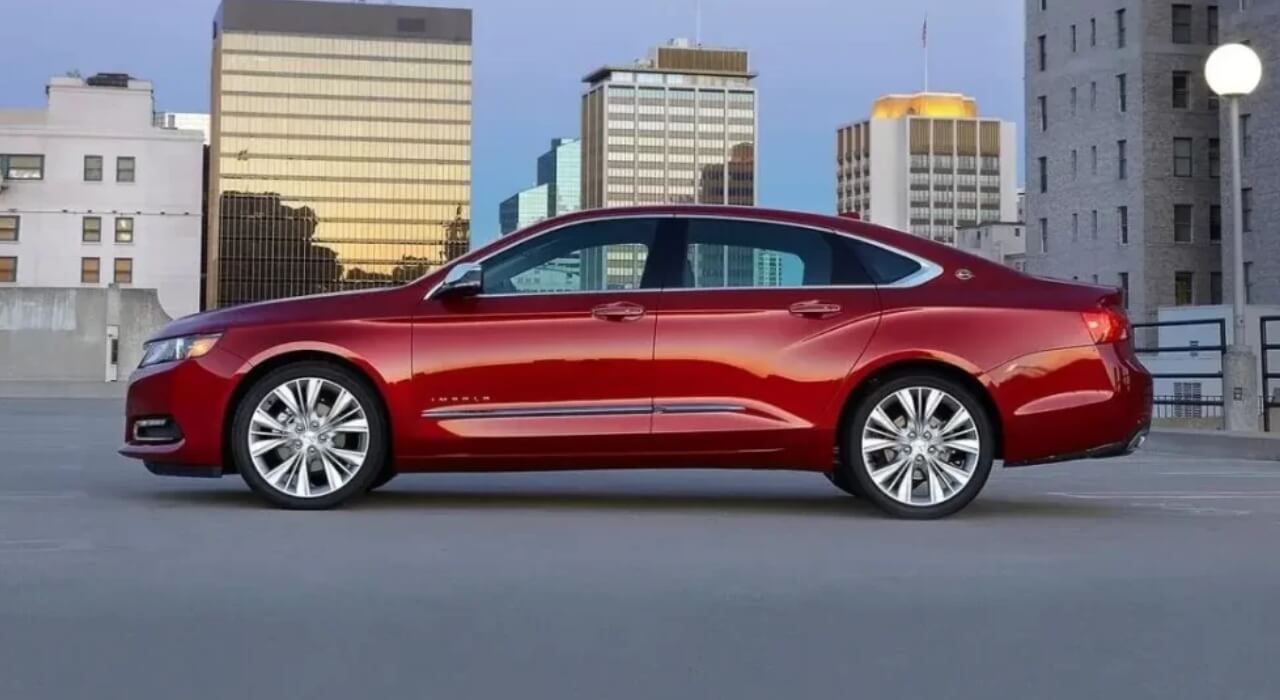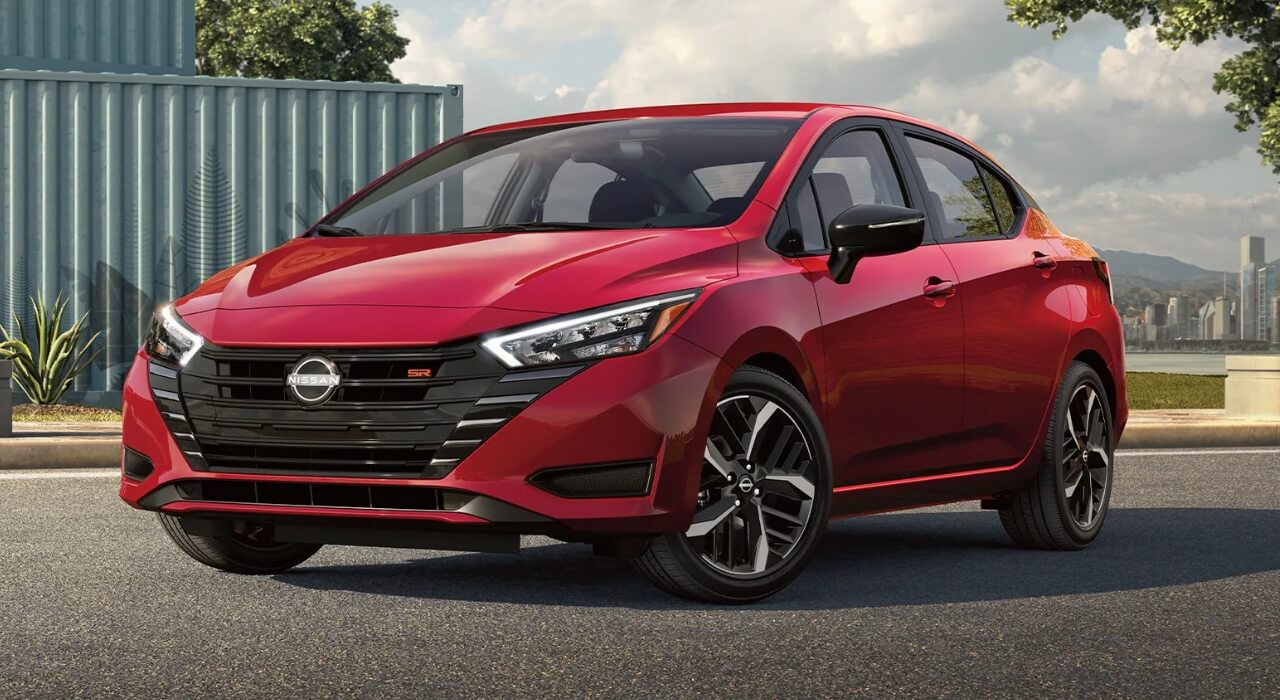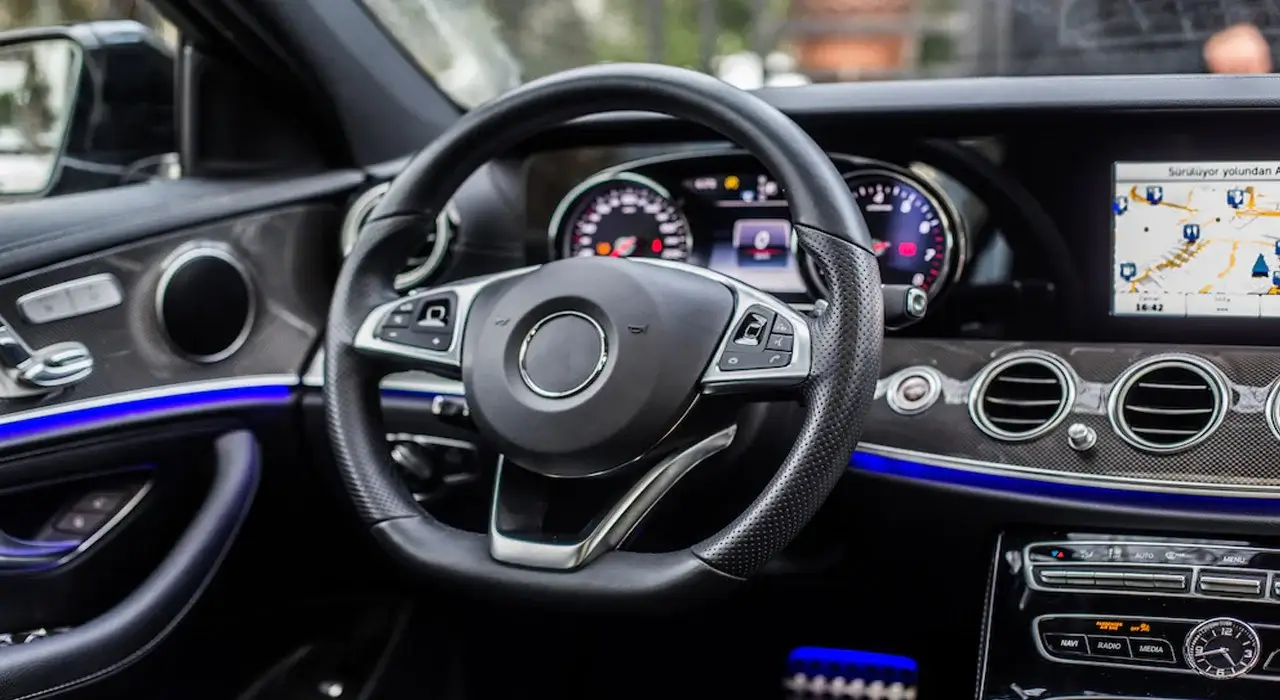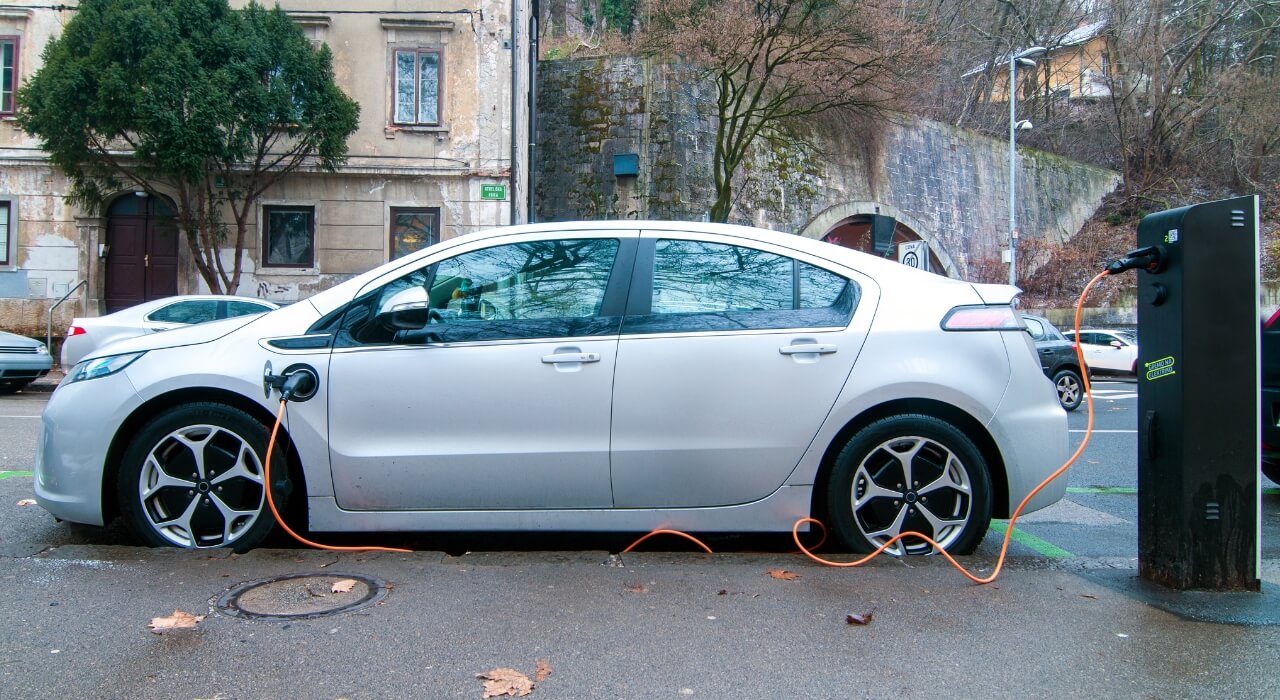Summer is here & we can not stress enough the importance of a vehicle’s air conditioning system. However, if you are wondering why your car air conditioner is not blowing cold air, we can help. It is common for a car’s AC to stop blowing cold air. However, the reason can be different for every owner.
A properly working AC that blows refreshing air is a must-have for the comfort of you & your passengers. It is pivotal if you use your ride for rental services like Uber.
If your car’s air conditioning goes out suddenly, the reason can either be small or huge. You can easily handle a minute one while something serious calls for professional assistance.
Whether your car AC is blowing cool but not cold or downright giving the hot waves, we can help you diagnose the problem and even sort it out.
In this article, we will talk about car air conditioning systems, the top reasons for their not working situations, ways to diagnose them, and how to take better care of them.
So, let us begin and help you find the reasons behind your car ac not blowing cold air.
How Does The Air Conditioning System Work Of A Car?
Before we begin finding the answer to your question of why my car ac not blow cold air, let us explore a bit. You can not handle any issue related to your car’s air conditioning until you know its system and how it works.
So, let us familiarize ourselves with how a car air conditioning system works. The A/C system of an automobile works by cooling down the seating area by channeling refrigerant through a closed loop in various states.
In Layman’s terms, the refrigerant is manipulated by the A/C system between a liquid & gaseous state. As the refrigerant changes its state, it absorbs heat & humidity from the vehicle & allows the system to give off cool & dry air.
The change in the state of the refrigerant is done by the ac system by controlling pressure & temperature.
The 9 Most Common Problems Why My Car Air Conditioner Is Not Blowing Cold Air
There are several reasons why the air conditioning system of your ride is not working properly. And the best way to find the answer to why your car’s ac is running but not cooling is by going through all the possibilities.
In this section, we will explore the nine primary reasons why the cooling system of your ride is acting out. However, remember, it is not always easy to catch on AC problems as they often require in-depth diagnoses, extensive disassembly, and specialized tools.
Thus, do not hesitate to seek professional help if you can not find anything.
Related: 7 Best Motorcycle Helmets For Touring.
1. Low Refrigerant
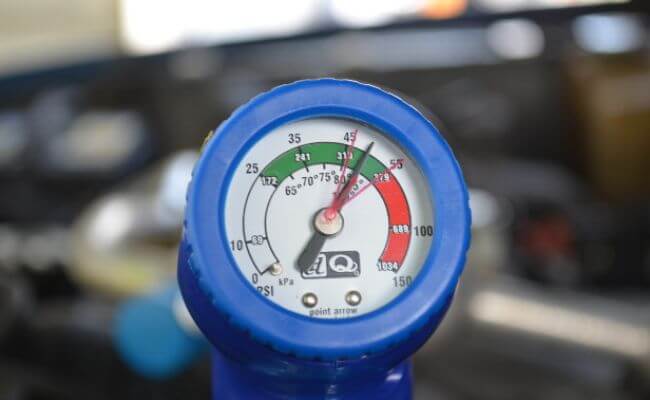
One of the most common reasons behind inefficient AC system operation or cooling is low refrigerant. The low refrigerant level is generally due to an undiscovered leak within your system.
In addition, this fluid leak is challenging to detect as it instantly vaporizes as soon as it comes in contact with air. Even professionals use specialized tools to determine the leak. But before the conditions worsen to this state, there are a few ways you can find the refrigerant leak:
-There will be an audible click when the AC is switched on
-Hissing sounds will be frequent from the AC system when the engine is OFF
-You will find oil residue around AC pipe fittings and hoses
2. Excess Refrigerant
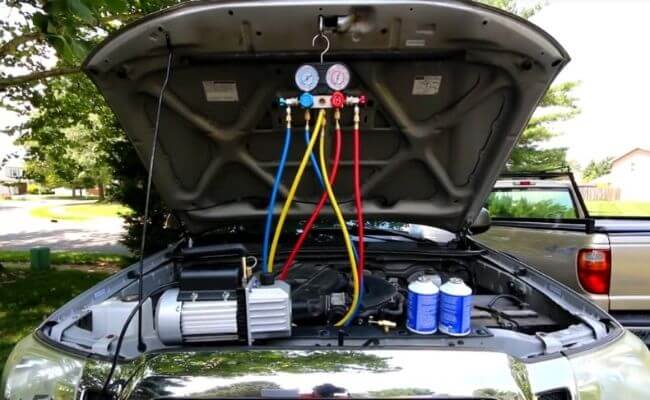
Although the chances of this scenario are negligible, the presence of excessive refrigerant can also affect the cooling. The excessive refrigerant leads to system overcharging, further leading to excessive pressures. There is excessive refrigerant fluid in a car when its owner tries to add it by himself at home.
3. System Restrictions
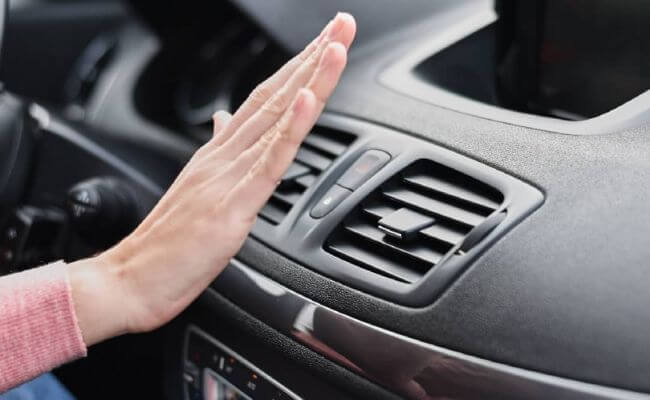
The restrictions within the air conditioning system can be another reason behind its poor working. A restriction stifles refrigerant flow, and sometimes even leads to unpremeditated conflict in the system pressure. And this all chaos leads to suffering in cooling.
Also Check:
4. Air Contamination
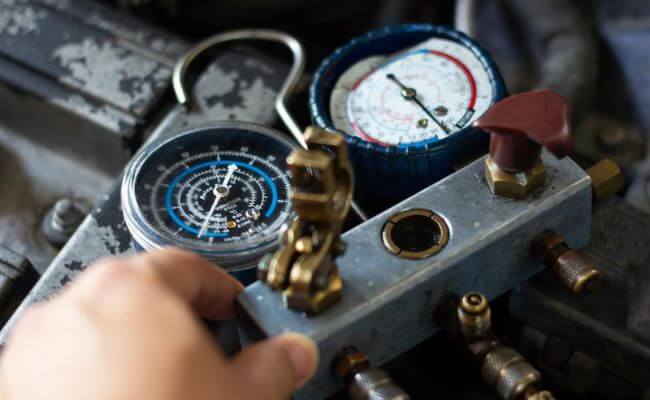
To operate at its optimum efficiency, a vehicle’s AC system should be free of air or moisture contaminations.
Even the smallest amount of moisture or air can cause variable pressures within the system. Air is often introduced to the system while using an At-Home charging kit.
The presence of excess moisture can also damage the drying component found within the dryer or the accumulator of the system.
5. Damaged Compressor
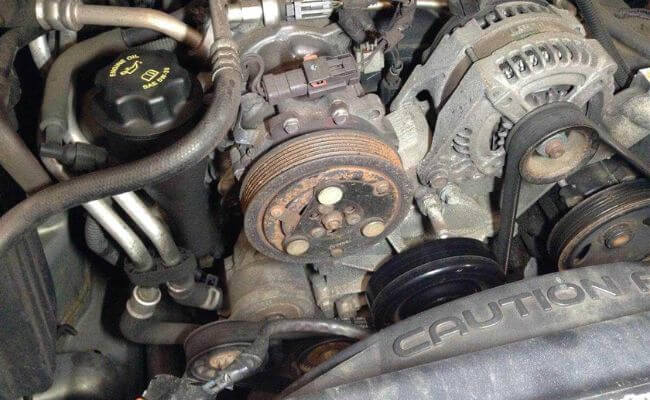
A compressor’s task is to pressurize the refrigerant. However, if it is starved for oil, it can fail rapidly. The instant this happens, the entire cooling of your ride will cease on the spot, and the temperature within the cabin will begin to rise. If you experience internal AC compressor failure, flush out the remainder of the system.
6. Clutch Failure
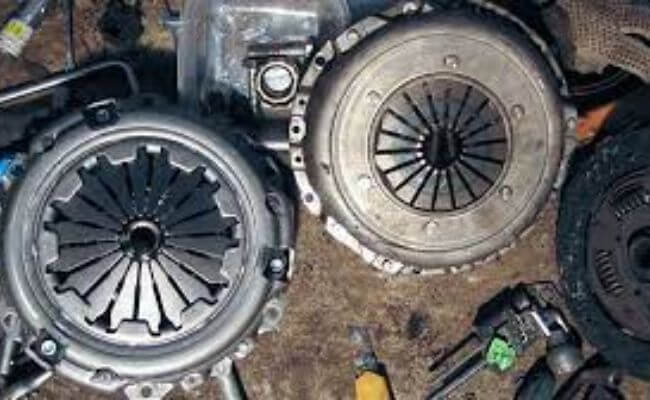
The compressor of your air conditioning relies upon the use of a clutch. Here, the clutch is the part of the vehicle that works on command and navigates the rest of the unit’s internal components.
Popular For You: 5 Top Rated Car Seat Extender For Long Legs.
This clutch magnetically actuates and releases back into the free-wheel position when all the power is withdrawn. The failure of the AC clutch leads to the failure of the system compressor.
7. Malfunctioning Cooling Fan
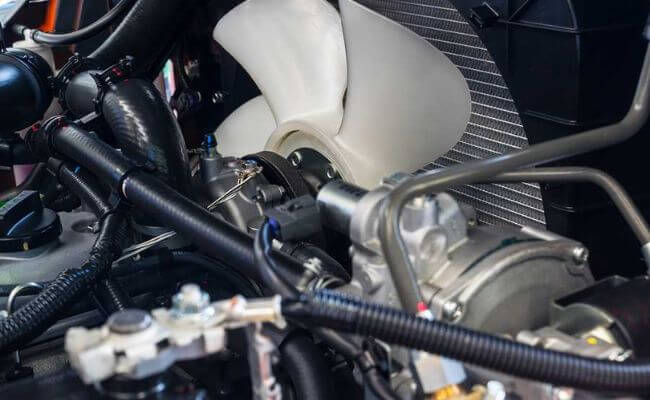
If the condenser fan is not working properly, it can lead to poor cooling efficiency. Adequate airflow is a must for the condenser to maintain high-side system pressures.
So, if you encounter your vehicle cooling when in motion but not blowing cool air when idle, your cooling fan is at fault.
8. Faulty Sensors
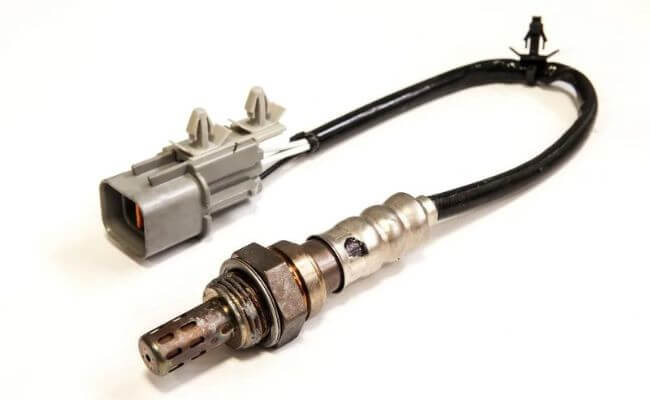
If out of the many, even a single sensor of the AC system fails, it will harm the operation badly. It will be hard for the computing system of your ride to determine the correct compressor clutch duty cycles.
Also Check:
9. Blend Door
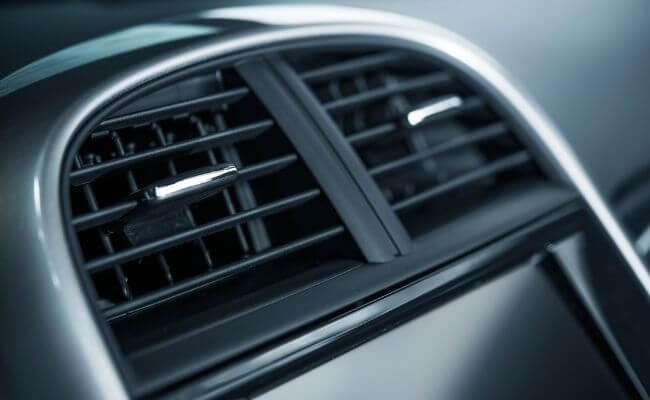
The blend door is responsible for directing hot air from your engine to your cabin space. If it gets stuck, you will not get any cold air, even if all the other components of your AC are working properly.
Diagnosing this problem is hard as the blend door is located far under the dash. You can try to listen to if the door is shutting or accessing it & try to shut it manually and see if that makes any difference.
Refrigerants Of AC System
Earlier, the air conditioning systems of automobiles used R-12, also known as Freons. R-12 is a highly effective CFC-based refrigerant that is not poisonous to the human body and is also non-flammable.
However, with time scientists discovered that the widespread usage of this chlorofluorocarbon was damaging the Ozone layer of Earth.
Suggestion: 7 Most Comfortable Car Seats For Long Trips.
Thus, refrigerator manufacturers across the globe transitioned to R-134a. R-134a is an HFC-based or hydrofluorocarbon refrigerant that does not harm the ozone layer.
R-123yf is the newest refrigerant around which produces fewer greenhouse gases. It is most likely to become the new standard in the US in the coming years.
Various Parts Of Car AC System
If your car ac stopped blowing cold air, there is an issue with your cooling system. But to ensure where the problem is or what is causing it, you need to familiarise yourself with its components.
There was a time when the air conditioning system in a car was considered a luxury. At present, it is an expectation that people want to be fulfilled.
Almost every new car that makes it to the American automotive market is equipped with one. It has become an integral standard feature.
Thus, it is high time for you as a car owner to learn more about your ride than ever. Below, we have listed the main parts of an automotive air conditioning system with their roles.
A. Compressor
A compressor is a power unit of the AC system that works on separating the low-pressure side from the high-pressure one.
It takes in the low-pressure gas and compresses it into the high-pressure gas. It is responsible for all pressurizing & cycling of the refrigerant. It is mounted to the front of the engine and is driven by the serpentine belt.
B. Condenser
A condenser is like a radiator device mounted behind the grille of the vehicle & uses a forced fan to transfer heat.
It reduces the temperature of the refrigerant while it maintains high pressure. With the air passage, the condenser allows the refrigerant to change from gas to liquid as it cools.
C. Dryer or Accumulator
A vehicle features a dryer or an accumulator, depending on the type of AC system installed. An accumulator is generally found only in orifice tube systems. And a dryer is a crucial component in expansion valve systems.
Don’t Miss To Checkout: Top 7 Common Problems After Changing Fuel Pump.
A dryer helps in removing water from the refrigerant using a drying agent. In addition, it also holds some system-filtering properties for better maintenance.
It is mounted on the high-pressure side of the system. To be precise, between condenser and metering device.
D. Metering Device (Orifice Tube/Expansion Valve)
A metering device helps in the refrigerant flow within the system. Some AC systems are equipped with either a fixed orifice tube or an expansion valve.
The metering device lowers the refrigerant pressure, instantly dropping the refrigerant temperature. The refrigerant is still in a liquid state after leaving the metering device. It is mounted on the high-pressure side of the cooling system between the dryer and firewall.
E. Evaporator
The evaporator is a compact heat exchanger & is mounted behind the dashboard, inside the cabin area.
In the evaporator, the refrigerant changes back to the gaseous state, which gives the cooling effect.
The air in your car seating area is cooled and dried as it blows across the evaporator.
Working on a Car Cooling System
Now that you are familiar with the different crucial components of a car cooling system, we are moving toward its working mechanism.
For better understanding, we have broken down the entire process into six small steps.
Let us have a look at how the air conditioning system of an automobile works.
- As soon as the car’s AC is turned on, the low-pressure or low-temperature refrigerant enters the compressor in gaseous form.
- The refrigerant moves around the compressor & gains high pressure or high temperature and leaves it still in its gaseous state.
- After entering the condenser, the refrigerant cools down and converts into liquid while still under high pressure.
- As the refrigerant enters the dryer, the dryer begins working on removing water or moisture from the refrigerant.
- Now comes the expansion valves that work on reducing the pressure of the refrigerant.
- In the final component, the evaporator, the refrigerant converts back to gaseous form. The evaporator absorbs heat, and thus the air that blows across it is cool & dry.
3 Easy Steps On How To Fix Car AC Not Blowing Cold Air
As discussed above, there are various reasons why the AC system of your car is not working correctly. But before you come down to exploring those reasons, you should learn to diagnose your air conditioning.
Marinating a regular inspection will help you pick up on the issue before it gets worse. Follow our three easy steps and learn to narrow down your options.
– Step 1
Firstly, start the engine and turn on the AC to the maximum setting. Ensure the fan is set to its highest setting and the cooling is at its coldest setting.
– Step 2
Open the hood of the car and check if the compressor is running. If you do not find the belt around the compressor driven by the clutch moving, your compressor is at fault.
Related: 6 Top Symptoms Of Engine Damage From Overheating.
But to make sure of it by checking the pressure next.
– Step 3
With the help of a pressure gauge check the pressure when the compressor is running. If the gauge shows a normal range, your system might be low on refrigerant.
But if you cannot locate a problem, you should go for professional assistance and have it fixed before any more damage is done.
FAQs Related Car AC Stopped Blowing Cold Air
How to fix the car ac not blowing cold air?
The car ac system is tricky. Not everyone can work to fix it. You surely can diagnose it, and if you come across a reason like low or excessive refrigerant fluid, you can fix it.
You can do the self-repair with the help of an Auto Air Conditioning Recharge Kit. It lets you replace lost refrigerant & oil, checks pressure & temperature, and even help is cleaning.
However, to ensure the proper functioning and better condition of your ac system, it is better to seek professional help.
Why is my car ac not blowing cold air?
If your car’s ac is not cooling the cabin, there can be several reasons for it. The article covers the top nine most obvious reasons.
Go through each reason and inspect your ride to find the issue.
It can be a faulty compressor, low or excessive refrigerant, moisture attack, broken clutch, & more. So, inspect each reason to get to the bottom of the issue.
How much will it cost to fix my broken car ac?
The amount of money it will take you to fix your ac depends on the severity of its damage issue(s).
However, on average, repairing a car’s ac will cost you $100 to $900. This cost escalates higher if there is a requirement for additional parts like a new sensor, compressor, condenser, etc.
Can a blown-up fuse affect the working of ac system?
YES. AC system in your ride comprises various parts & some of which are electrical, including the compressor.
And if even a simple fuse blows up your ac can stop working. Sometimes it is not the bigger issues but the small ones that create the fuss.
So, before you panic or rush to a mechanic, try to inspect the issue yourself. If you are not able to point it out, going for the expert is the best solution.
Does my car insurance cover my ac repairs?
Your car insurance in America will cover your broken air conditioning system as long as it is a result of impact damage like a flying object hitting your condenser or you running over something that leads to the damage and more.
As long as the reason for the damage was an external source, you are covered. However, if the ac failure is due to regular wear & tear, you are most likely to get denied your claim.
Conclusion
With the temperature rising with the passing of every single day, it is more than a necessity to have a working AC system in your car. And if you somehow find yourself with a faculty one, this beginner’s guide will help you locate the issue ASAP.
With learning about structure, working, and reasons for the failure of the car ac system, we hope you will be able to take better care of your air conditioning.







